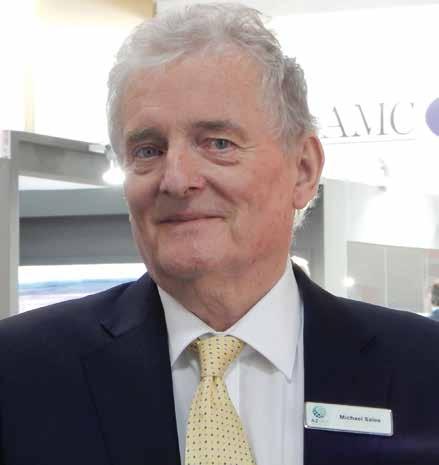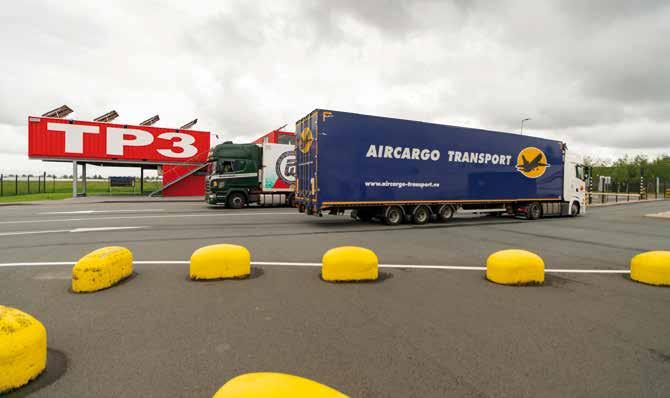
6 minute read
ICS 2: more control over postal and express shipments
by Cargomedia
ICS 2
more control over postal and express shipments
Advertisement
A good deal of work has been done in recent years on the Import Control System version 2 in order to offer EU citizens and companies even more protection. ICS 2 is used to collect as much data as possible on goods destined for the EU – even before they are loaded in the country of origin. The first phase of the project focuses completely on postal and express shipments.
The updated ICS 2 declaration system stems from the desire to improve public safety and security, explains Shirley Gerritsen, director of the Customs National Tactical Centre. “9/11 made us realise how vulnerable our society is. Since then, there have also been attacks in Europe. A bomb was even found in an air cargo package. Terrorism thus remains an everpresent threat. ICS 2 provides us with an EU-wide monitoring system that will greatly improve our information position. It automatically improves our automated risk analysis on data on goods entering the EU. By land, air, water or rail.”
ICS 2 is not a single defined system. It is sooner a collection of various Dutch and European applications and portals. Because of the size, complexity and impact of ICS 2, it was decided to introduce it in three phases (see box). This is being done in consultation with the business community. Gerritsen: “Step by step we are building that information position together. For the Netherlands, the first phase is limited to PostNL mail items. All other goods flows will be included in phase 2.”
Shoulder against the wheel
In phase 1, PostNL is the only supplier in this specific flow of goods. But with 60 million parcels a year, it is by no means a small one. The company will need to put its shoulder against the wheel, says Gerritsen. “For incoming mail consignments, PostNL has to electronically deliver ENS data before departure to the EU. ENS stands for Entry Summary Declaration. Previously, this had to include at least a sufficiently precise description of the goods. In ICS 2 more data needs to be entered. PostNL is changing its work process to comply with this declaration obligation. The company must also be able to receive messages from Customs and process them correctly. But this doesn’t all have to be done at once. They have until October 1 to make sure we actually start receiving the data. This includes information about the sender and recipient of a parcel. Take a shipment declared as a fabric sample, for instance. Is the parcel being sent from an address that a risk analysis of the enhanced ENS data has identified a drug factory? That is a red flag for us. Or does it concern a type of medicine that is banned in the EU? But if the shipment is simply declared as a permitted medicine, there is obviously less reason for an inspection. The added value of ICS 2 really does lie in this improved information position. The more data we have, the more likely we are to discover irregularities.”
Early risk check
It is important that the requested information regarding a shipment is available in ICS 2 before the flight’s departure. This gives EU countries the opportunity to assess any risks before take-off. Gerritsen: “If an automated analysis of declarations reveals such risks, a customs officer will check whether anything is wrong. Customs can ask for additional information or have additional screenings carried out. We work together with the Royal Netherlands Marechaussee (Military Police). If the additional information shows that there is a real threat, the NCTV* will decide whether to issue a do-not-load statement. In that case, the shipment may not be loaded.”
A do-not-load statement is not entirely new, says Gerritsen. “The principle is also known in shipping. But that is a completely different type of transport movement. We use a smaller dataset for the assessment. The turnaround time is also a lot longer than with air freight.
Shirley Gerritsen, director of the Customs National Tactical Centre

ICS 2 roadmap
The first phase of ICS 2 focuses on PostNL parcels that enter the Netherlands by air. The second phase affects all air cargo. In this phase, further changes are implemented in the areas of temporary storage and the presentation and placement notice. Carriers are also given the opportunity to have certain data supplied by other parties in the logistics chain (multi-filing). For example, information about the actual sender or receiver may be submitted by that sending or receiving party. The third and final phase is planned for 2024. That is when ICS 2 will be rolled out completely, and the obligations will also apply to freight by ship, rail and road.
That means that we know far sooner what is being transported to Europe. Besides, you can’t really use a freighter – unlike an aircraft – as a weapon. That is why a do-not-load statement has yet to be issued for a shipment by sea. How will that play out in air cargo? That is hard to say because we have only just started, but it is vital to act with due care. The last thing we want to do is stop a flight and disrupt the logistics process. Those are not decisions to be taken lightly.”
Enhanced EU cooperation
Another important new aspect is the joint risk assessment. This calls for closer cooperation between Member States, which each have access to all summary declarations received through ICS 2. They are collected in the Common Repository, an EUwide database. ICS 2 also allows for different roles: those of Responsible Member State (RMS), Involved Member State (IMS) and Member State of Control (MSC). Gerritsen: “If a package arrives in Germany with a final destination in the Netherlands, we look into the risk assessment of our German colleagues. In this example, Germany is the RMS, the Netherlands the IMS. And it works the same the other way around. In that case, Germany is the IMS, and the Netherlands the RMS. It could be that we think nothing is wrong, while our German neighbours identify a risk and contact us. Perhaps they have a terrorist cell in their sights, for whom the package seems to be intended. In that case, an additional screening in the country of origin may be necessary. This could even lead to a do-not-load order.”
Risks covered
According to Gerritsen, obtaining sufficient data of the right quality remains a challenge. “It demands something of all the players in the chain. Companies will need to improve their existing IT systems, for example, in order to share information according to the new specifications. ICS 2 was in fact developed on a different platform, and a standard format – XML – was agreed upon.
It will be used by businesses and regulators across the EU. This also calls for the adaptation of internal processes and the training of the employees involved. Of course, this applies equally to declarants, or their software suppliers. ICS 2 also makes heavy demands on us at Customs. We have developed and tested a new risk management system, for example. Helpdesk staff have been trained to support declarants and their software suppliers and to help resolve incidents. Everyone needs to realise that this movement will ultimately affect all market participants involved in handling, shipping and transporting freight, parcels and postal items. That ranges from postal companies inside and outside the EU to air cargo companies. And from freight forwarders and logistics providers to sea, rail and road carriers.”
This article has been published on www.customsnl-insight.nl (nr. 1 2021)
* NCTV: National Coordinator for Counterterrorism and Security










